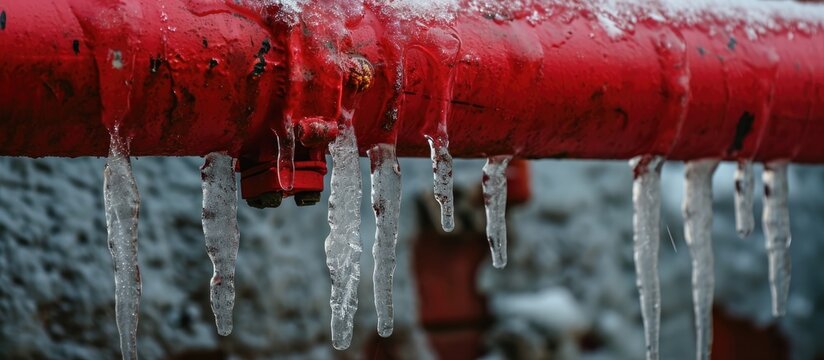Avoiding Your Pipes from Cold Weather: Top Tips
Avoiding Your Pipes from Cold Weather: Top Tips
Blog Article
In this article in the next paragraphs you might get more reliable additional info in relation to Helpful Tips to Prevent Frozen Pipes this Winter.

Cold weather can ruin your plumbing, specifically by freezing pipelines. Right here's exactly how to avoid it from occurring and what to do if it does.
Introduction
As temperature levels decline, the danger of icy pipes boosts, potentially bring about expensive repairs and water damages. Understanding exactly how to prevent frozen pipelines is important for homeowners in chilly environments.
Recognizing Frozen Pipes
What triggers pipelines to ice up?
Pipes freeze when subjected to temperature levels listed below 32 ° F (0 ° C) for expanded durations. As water inside the pipelines ices up, it expands, putting pressure on the pipe walls and potentially causing them to burst.
Risks and problems
Icy pipelines can bring about water disturbances, residential or commercial property damage, and pricey repair services. Burst pipes can flooding homes and trigger comprehensive structural damage.
Indications of Frozen Piping
Recognizing frozen pipes early can stop them from bursting.
Just how to identify frozen pipelines
Look for reduced water circulation from taps, uncommon odors or noises from pipelines, and noticeable frost on subjected pipelines.
Avoidance Tips
Insulating at risk pipes
Cover pipes in insulation sleeves or utilize warmth tape to safeguard them from freezing temperature levels. Concentrate on pipelines in unheated or external areas of the home.
Heating techniques
Keep interior areas properly heated up, specifically locations with pipes. Open cabinet doors to allow warm air to circulate around pipelines under sinks.
Shielding Exterior Pipes
Garden hoses and exterior taps
Detach and drain yard pipes before winter. Mount frost-proof spigots or cover exterior faucets with insulated caps.
What to Do If Your Pipelines Freeze
Immediate actions to take
If you believe frozen pipelines, keep taps open up to ease pressure as the ice thaws. Utilize a hairdryer or towels soaked in warm water to thaw pipes slowly.
Long-Term Solutions
Architectural changes
Take into consideration rerouting pipelines away from exterior walls or unheated locations. Add added insulation to attics, basements, and crawl spaces.
Updating insulation
Invest in high-quality insulation for pipes, attic rooms, and wall surfaces. Proper insulation assists keep regular temperature levels and reduces the threat of icy pipelines.
Verdict
Protecting against icy pipes requires proactive measures and fast actions. By comprehending the causes, indicators, and safety nets, house owners can protect their pipes during winter.
6 Proven Ways to Prevent Frozen Pipes and Protect Your Home
Disconnect and Drain Garden Hoses
Before winter arrives, start by disconnecting your garden hoses and draining any remaining water. Close the shut-off valves that supply outdoor hose bibs and leave the outdoor faucet open to allow any residual water to drain. For extra protection, consider using faucet covers throughout the colder months. It’s also important to drain water from any sprinkler supply lines following the manufacturer’s directions.
Insulate Exposed Pipes
Insulating your pipes is an effective way to prevent freezing. Pipe insulation is readily available at home improvement stores and is relatively inexpensive. Pay close attention to pipes in unheated areas such as the attic, basement, crawl spaces, or garage. Apply foam insulation generously to create a buffer against the cold. You can also wrap your pipes in heat tape or thermostat-controlled heat cables for added warmth.
Seal Air Leaks
Inspect your home for any cracks or openings that could let in cold air. Seal any holes around the piping in interior or exterior walls, as well as the sill plates where your home rests on its foundation. Additionally, make sure to keep your garage door closed unless you’re entering or exiting. Leaving it open creates a significant air leak that can lead to frozen pipes.
Allow Warm Air Circulation
During cold snaps, it’s essential to allow warm air to circulate evenly throughout your home. Leave interior doors ajar to promote better airflow. Open kitchen and bathroom cabinets to help distribute heat consistently around the rooms. If you have small children or pets, be sure to remove any household chemicals or potentially harmful cleaners from open cabinets for safety.
Let Faucets Drip
A small trickle of water can make a big difference in preventing ice formation inside your pipes. When temperatures drop significantly, start a drip of water from all faucets served by exposed pipes. This continuous flow helps prevent the water from freezing. Additionally, running a few faucets slightly can relieve pressure inside the pipes, reducing the chances of a rupture if the water inside does freeze.
https://choateshvac.com/6-proven-ways-to-prevent-frozen-pipes-and-protect-your-home/

We are very serious about How to Prevent Your Pipes From Freezing and I hope you appreciated my blog entry. Don't hesitate to take the opportunity to promote this blog posting if you liked it. Thank you for being here. Come back soon.
Click Here Report this page